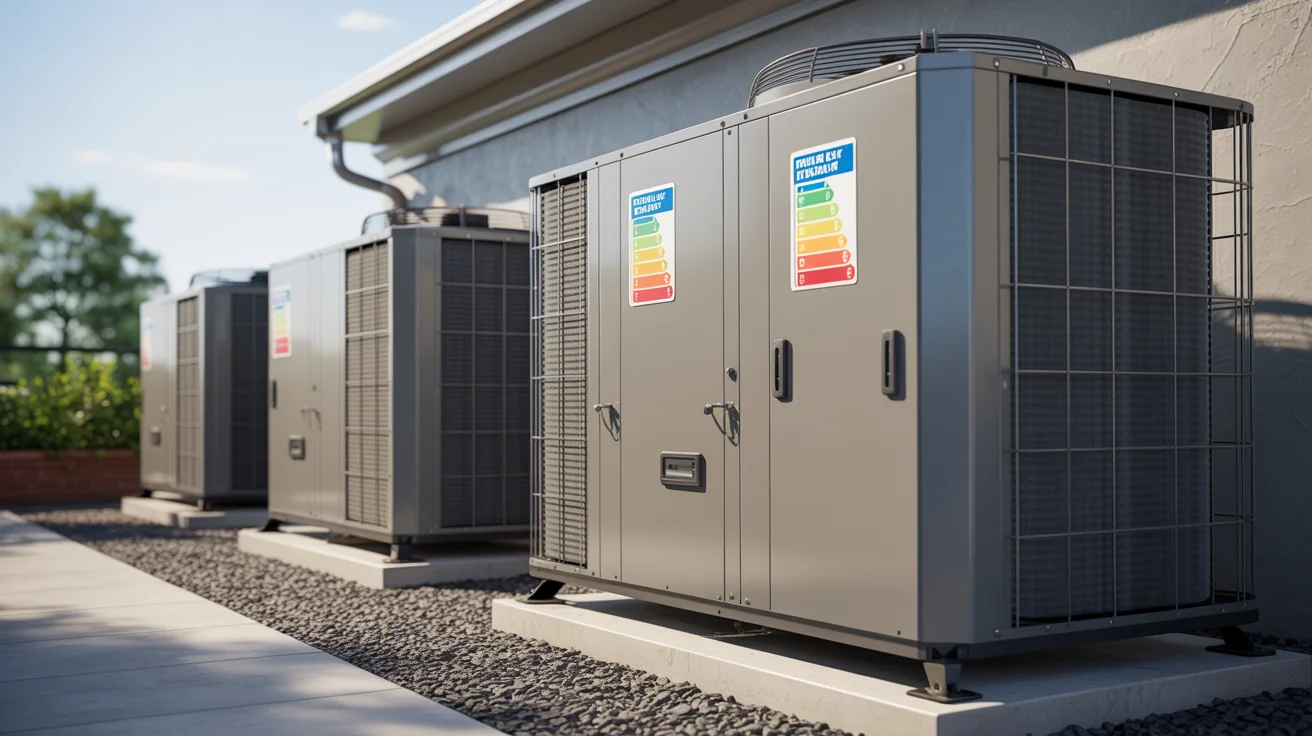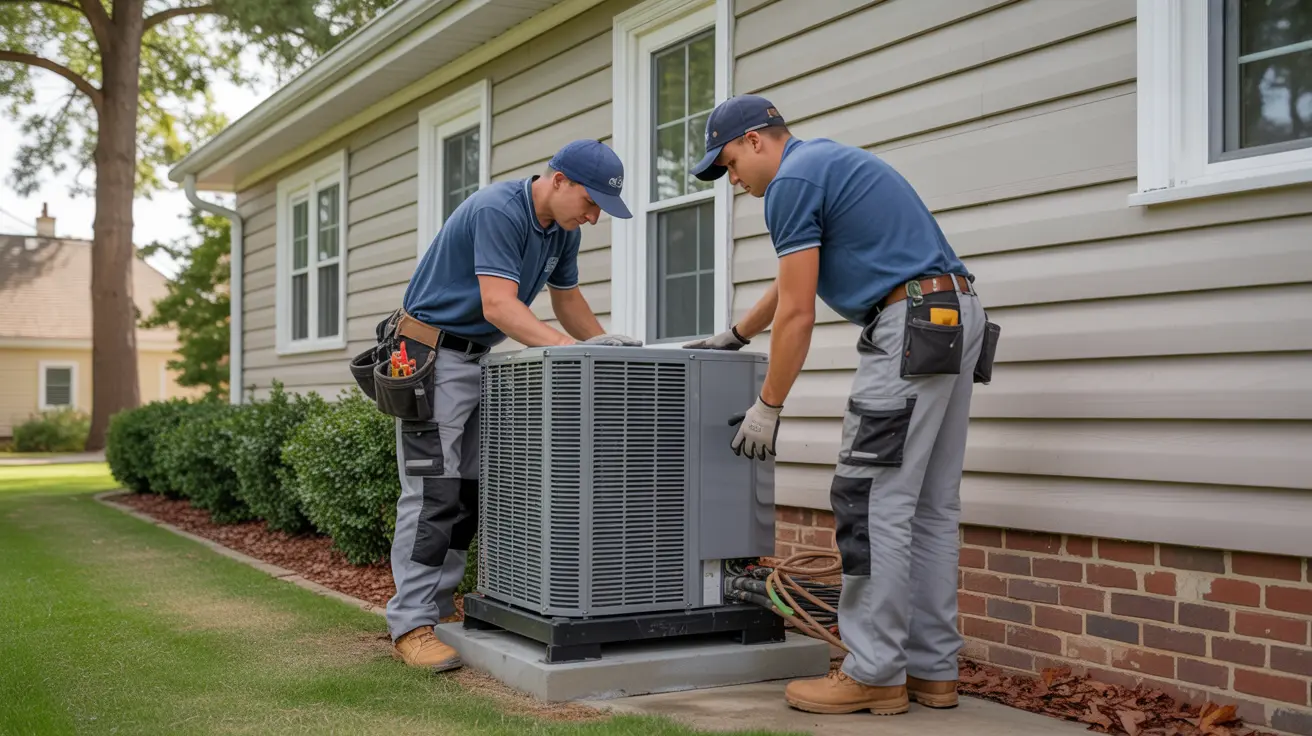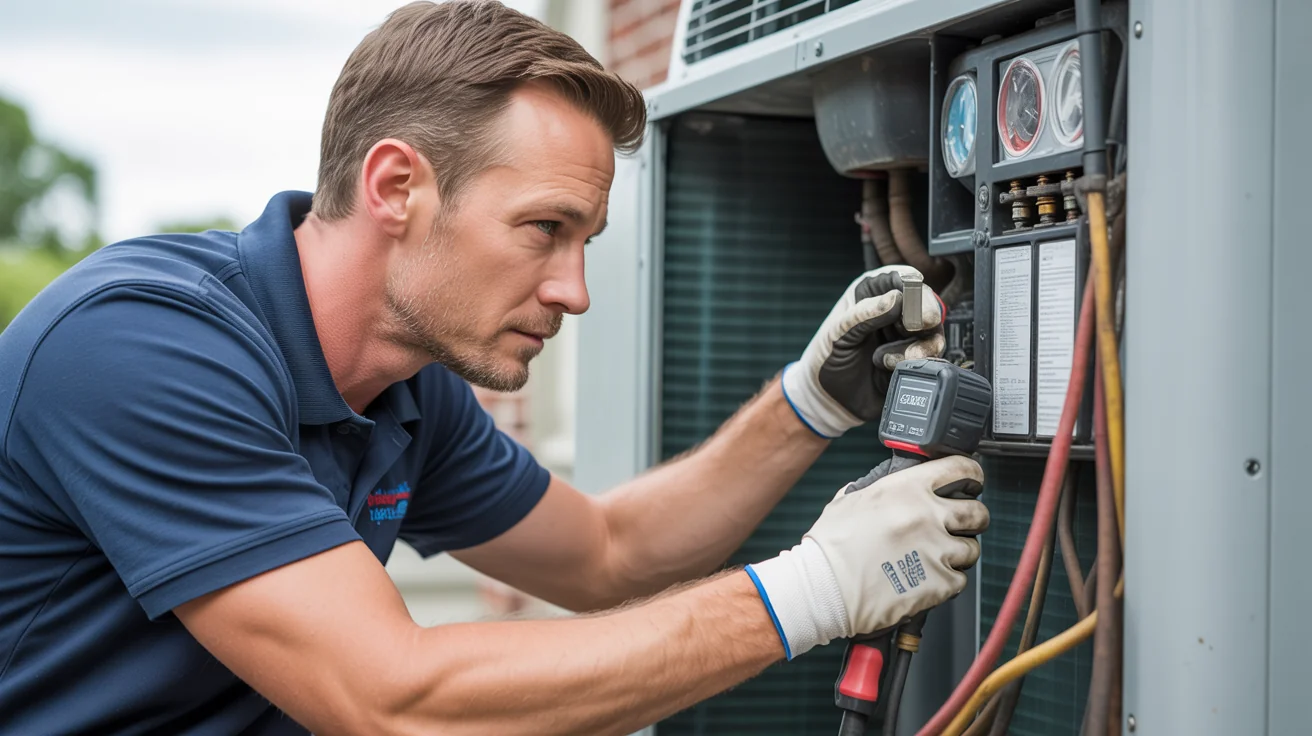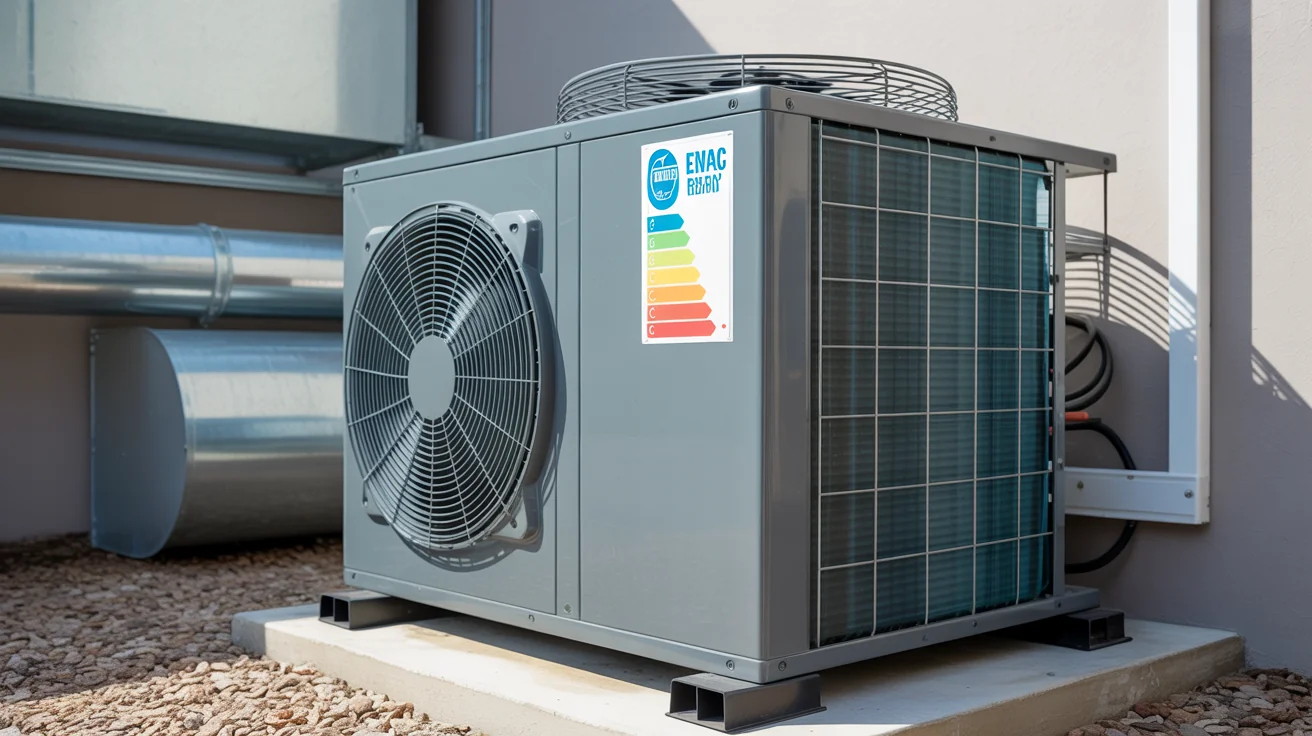HVAC Airflow Analysis and Ductwork Optimization: North Texas Performance Guide
Advanced guide to HVAC airflow analysis and ductwork optimization for North Texas systems. Professional techniques for maximum airflow efficiency, comfort, and performance.

- The Truth About HVAC Airflow and System Performance
- North Texas Airflow Challenges
- Comprehensive Airflow Analysis Methodology
- Ductwork Design and Optimization
- Ductwork Installation and Sealing
- Airflow Optimization Techniques
- Advanced Airflow Technologies
- Diagnostic Tools and Testing Equipment
+ 11 more sections below...
- The Truth About HVAC Airflow and System Performance
- North Texas Airflow Challenges
- Comprehensive Airflow Analysis Methodology
- Ductwork Design and Optimization
- Ductwork Installation and Sealing
- Airflow Optimization Techniques
- Advanced Airflow Technologies
- Diagnostic Tools and Testing Equipment
+ 11 more sections below...
The Truth About HVAC Airflow and System Performance
Devastating North Texas Airflow Reality Check: The Patterson family in Frisco spent $18,500 on a top-tier variable-speed system with the highest efficiency ratings available. Their contractor promised dramatic energy savings and perfect comfort.
Six months later, their reality was devastating: Energy bills were 50% higher than their old “inefficient” system. The living room stayed 8°F hotter than the rest of the house all summer. The system ran constantly but never achieved comfortable temperatures. Rooms felt stuffy despite “high-tech” equipment operation.
The shocking discovery: Their expensive equipment was flawless. The problem was airflow analysis—or the complete lack of it. The installer never tested ductwork performance, never verified airflow distribution, never optimized the system for their specific home.
Professional airflow analysis revealed horrific truths: The ductwork was 40% undersized in critical areas. Major leaks were hemorrhaging 35% of conditioned air into unconditioned spaces. Return air pathways were strangled by poor design. System static pressure was triple what it should have been.
The transformation: Professional airflow analysis and ductwork optimization took 3 days and cost $8,500. The results shocked everyone: The transformation delivered 67% improvement in cooling effectiveness with perfect temperature uniformity. Energy costs dropped 43% as the system finally operated efficiently. Whisper-quiet operation replaced the previous freight train noise. Equipment protection ensured their investment would last 20+ years instead of failing prematurely.
This complete guide reveals professional airflow analysis techniques and ductwork optimization procedures that separate high-performance systems from expensive disappointments.
North Texas Airflow Challenges
Why North Texas Destroys HVAC Systems:
After 15+ years of analyzing airflow disasters across North Texas, here’s what makes our climate uniquely brutal for HVAC systems:
Climate-Specific Airflow Nightmares: Extreme static pressure demands force systems to fight against massive resistance while trying to move enough air for 100°F+ temperatures. Temperature differential stress from managing 40-50°F temperature differences between outdoor and indoor air puts incredible strain on airflow systems. Humidity removal requirements demand moving enough air to strip moisture from soup-like summer humidity. Dust storm management requires enhanced filtration for our legendary dust, creating additional airflow restrictions. Marathon operation periods see systems running 12-16 hours daily for months, exposing every airflow weakness.
Ductwork Performance Killers:
Texas conditions attack ductwork relentlessly:
Thermal expansion destruction causes ductwork to expand and contract so dramatically that joints separate, seals fail, and connections blow apart. Insulation breakdown occurs when extreme attic heat turns duct insulation into worthless fluff that provides zero thermal protection. Foundation settlement disasters happen as Texas clay soil movement crushes underground ducts and pulls apart connections. Contamination accumulation develops as dust, pollen, and biological growth build up inside ducts, strangling airflow over time.
Comprehensive Airflow Analysis Methodology
Phase 1: System Assessment and Documentation (60-90 minutes)
My Complete Airflow Detective Work:
1. Ductwork Forensic Investigation
This is where I put on my detective hat and uncover what’s really happening in your system:
Visual ductwork inspection involves crawling through every accessible inch, documenting damage, disconnections, and installation mistakes that strangle airflow. Insulation reality checks assess whether your duct insulation is actually doing its job or has degraded into worthless fluff. Connection integrity investigation checks every joint, seal, and support to identify current and potential failure points. Access point strategy locates and creates test ports for precision measurements. System layout mapping documents your actual ductwork layout and sizing, which often differs dramatically from original plans.
2. Equipment Performance Reality Check
Here’s where I separate marketing claims from actual performance:
Equipment Truth Analysis:
Blower motor actual performance vs. nameplate promises reveals the difference between manufacturer claims and real-world performance under your specific installation conditions. Fan curve reality check for your specific operating conditions determines if your blower is operating efficiently within its design parameters. Static pressure capability under real-world conditions tests whether your equipment can overcome actual ductwork and filter resistance. Variable speed equipment actual operation verification ensures modulating equipment operates properly across its full range. Filter and coil pressure drop impact assessment quantifies how dirty filters and coils affect system airflow and efficiency.
I’ve found equipment performing at 60% of rated capacity due to installation issues, undersized ductwork, or maintenance neglect.
3. Design Intent Verification Original design review examines load calculations and airflow needs. Room-by-room airflow needs analysis determines individual space conditioning requirements. Return air adequacy assessment verifies return air pathway and sizing. Ventilation needs evaluation covers fresh air introduction and distribution. Code compliance verification ensures airflow meets all applicable codes.
Phase 2: Airflow Measurement and Testing (90-150 minutes)
Precision Airflow Measurement Procedures:
1. Total System Airflow Reality Check
This is where precision instruments reveal the truth about your system’s performance:
Fan airflow measurement determines exactly how much air your system is actually moving, not what it’s supposed to move. Coil face velocity analysis verifies airflow across heat exchanger surfaces to ensure proper heat transfer. Ductwork velocity mapping measures air speed in main supply and return ducts to identify restrictions. Static pressure investigation creates a pressure map showing exactly where your system is struggling. External static pressure calculation quantifies the total resistance your fan is fighting against.
Airflow Measurement Techniques:
Professional Airflow Testing Methods:
Pitot tube arrays for duct velocity measurement provide accurate velocity readings in main supply and return ducts to calculate total airflow. Hot wire anemometers for low-velocity measurements detect air movement in areas where other instruments are too insensitive. Vane anemometers for register and grille measurements provide direct airflow readings at supply outlets and return inlets. Digital manometers for pressure differential measurement quantify pressure drops across filters, coils, and ductwork components. Flow hoods for direct register airflow measurement capture total airflow delivery at supply outlets and return grilles for precise room-by-room analysis.
2. Room-by-Room Airflow Investigation
This is where I uncover why some rooms are comfortable and others aren’t:
Individual room airflow measurement determines exactly how much conditioned air each room receives versus what it needs. Return air capacity analysis verifies each space can actually exhale the air it receives. Airflow balance reality check calculates supply versus return balance to identify pressure problems. Temperature variation documentation measures room-to-room temperature differences to quantify comfort problems. Pressure relationship mapping assesses room pressure relationships that affect air movement and comfort.
3. Ductwork Performance Testing (Where the Truth Hurts)
This testing often reveals shocking problems that explain poor system performance:
Duct leakage quantification measures exactly how much conditioned air you’re losing to unconditioned spaces—often 20-40% of total airflow. Pressure drop analysis identifies components and sections that are strangling your system’s ability to move air. Velocity profile analysis maps air velocity distribution to find dead zones and turbulent areas. Turbulence assessment evaluates airflow quality—turbulent air doesn’t cool or heat effectively. Noise source identification locates airflow-related noise problems and their causes.
Phase 3: System Performance Analysis (60-120 minutes)
The Numbers Don’t Lie Analysis:
1. Airflow-to-Capacity Reality Check
Here’s where math reveals system performance truth:
Airflow Performance Reality:
CFM per Ton of Cooling = Total CFM ÷ System Tonnage
Target Range: 350-450 CFM per ton (I've found systems delivering only 200 CFM per ton)
Temperature Rise (Heating) = Supply Temperature - Return Temperature
Target Range: 35-70°F (systems outside this range have serious problems)
I’ve analyzed systems with such poor airflow that they operated at 50% capacity despite perfect equipment.
2. Energy Impact Analysis (Follow the Money)
This is where I show you exactly how much poor airflow is costing you:
Fan energy waste calculation determines how much extra power your fan uses fighting poor airflow. System efficiency destruction shows how airflow problems kill your equipment’s efficiency ratings. Comfort impact quantification measures the effect of airflow problems on livability. Equipment stress documentation reveals how poor airflow shortens equipment life and increases repair costs. Financial impact analysis calculates the real dollar cost of airflow optimization versus doing nothing.
3. Indoor Air Quality Assessment (The Hidden Performance Factor)
Poor airflow doesn’t just affect comfort—it impacts your health and indoor environment:
Ventilation effectiveness analysis determines whether fresh air actually reaches living spaces or gets wasted. Air change rate calculation shows how often your indoor air gets refreshed (crucial for health and odor control). Contaminant dilution effectiveness measures your system’s ability to remove pollutants, odors, and allergens. Humidity control capability evaluates whether your system can actually remove Texas humidity effectively. Filtration system performance compares how well your filters work when airflow is optimized versus compromised.
Ductwork Design and Optimization
Related: Ductwork Design
Advanced Ductwork Design Principles
Ductwork Design That Actually Works in North Texas:
After seeing countless ductwork disasters, here’s what actually works in our brutal climate:
1. Ductwork Sizing That Makes Sense
ACCA Manual D compliance follows industry standards that aren’t optional—they’re the difference between success and expensive failure. Friction rate reality balances duct size with fan energy to avoid systems that work too hard or move too little air. Velocity optimization keeps air speeds in the sweet spot for efficiency and quiet operation (nobody wants a freight train in their ceiling). Aspect ratio science recognizes that duct shape affects airflow more than most people realize—round is better than flat. Future expansion planning designs systems that can grow with your needs without complete replacement.
2. System Layout That Actually Works
Here’s what separates good ductwork design from disasters:
Ductwork Layout Reality:
Minimize total equivalent length because every foot of ductwork adds resistance that reduces system efficiency and airflow delivery. Reduce fittings and turns since each elbow costs you airflow and increases pressure drop throughout the system. Design adequate return pathways because systems need to breathe both ways with proper return air sizing and routing. Optimize trunk and branch configuration by thinking highway system, not city streets, for efficient air distribution. Plan for access and maintenance since you'll need to service this someday without destroying walls or ceilings.
I’ve seen beautiful ductwork designs that were completely unmaintainable and efficient layouts that looked like spaghetti but performed perfectly.
3. Component Selection and Integration Transition and fitting optimization ensures smooth airflow transitions. Register and grille selection provides appropriate air distribution devices. Damper integration includes balancing and zone control damper systems. Insulation system design optimizes thermal and vapor control. Support system design provides adequate support for thermal expansion.
Ductwork Installation and Sealing
Professional Installation Standards:
1. Ductwork Connection and Sealing Joint sealing standards require mastic and tape application for air tightness. Connection integrity depends on proper mechanical connections and support systems. Penetration sealing prevents air leakage around ductwork penetrations. Insulation installation maintains continuous thermal barrier without gaps. Vapor barrier integrity provides moisture control and condensation prevention.
2. Quality Control and Testing
Ductwork Installation QC Checklist:
□ All joints sealed per SMACNA standards
□ Insulation installed without compression or gaps
□ Vapor barrier continuous and sealed
□ Supports adequate for weight and thermal expansion
□ System tested for leakage and performance
Airflow Optimization Techniques
System Airflow Enhancement
How I Transform Poor-Performing Systems:
1. Static Pressure Reduction (Making Your Fan’s Job Easier)
Here’s how I reduce the resistance your system fights against:
Filter system optimization finds the sweet spot between air cleaning and airflow restriction. Coil cleaning and restoration removes years of buildup that strangles heat exchangers. Ductwork surgical enlargement expands undersized sections that bottleneck your entire system. Fitting replacement strategy swaps restrictive sharp-turn fittings with smooth transitions. Return air pathway enhancement opens up return pathways so your system can actually breathe.
2. Airflow Distribution Enhancement (Getting Air Where It Belongs)
Balancing damper precision fine-tunes airflow so every room gets exactly what it needs. Register and grille optimization selects and positions air outlets for maximum comfort and efficiency. Strategic ductwork re-routing sometimes requires completely redesigning airflow paths for optimal performance. Zone control integration installs multi-zone systems that deliver comfort where and when you need it. Variable speed fan optimization tunes fan speeds for maximum efficiency and whisper-quiet operation.
Advanced Airflow Technologies
High-Performance Airflow Solutions:
1. Variable Airflow Systems Variable air volume (VAV) systems provide automatic airflow adjustment based on demand. Variable refrigerant flow (VRF) integration offers advanced airflow control with VRF systems. Demand-controlled ventilation delivers fresh air based on occupancy and air quality. Smart damper systems enable automatic airflow adjustment and optimization. Pressure-independent controls maintain consistent airflow regardless of system pressure.
2. Air Quality Enhancement Integration
IAQ Integration with Airflow Optimization:
Enhanced filtration with minimal pressure drop impact uses high-efficiency filters that maintain airflow while improving air quality. UV light integration for biological contaminant control provides germicidal treatment without affecting system airflow performance. Humidity control integration with airflow management balances moisture removal with proper air distribution throughout the home. Fresh air optimization for indoor air quality ensures adequate ventilation without compromising system efficiency or comfort. Contaminant source control and isolation prevents pollutants from entering or spreading through the ductwork system.
Diagnostic Tools and Testing Equipment
Professional Airflow Testing Equipment
Advanced Measurement Tools:
1. Airflow Measurement Devices Digital anemometers provide velocity and volumetric flow measurement. Pitot tube systems enable precise ductwork velocity measurement. Flow capture hoods allow direct register and grille airflow measurement. Hot wire anemometers handle low velocity and direction measurement. Ultrasonic flow meters offer non-invasive airflow measurement.
2. Pressure and System Analysis Tools Digital micromanometers enable precise pressure differential measurement. Duct blaster systems provide ductwork leakage testing and quantification. Static pressure probes allow multiple point pressure measurement. Data logging systems support continuous monitoring and trend analysis. Thermal imaging cameras detect thermal performance and leakage issues.
Analysis and Reporting Software
Professional Analysis Tools: Ductwork design software enables computer-aided ductwork design and optimization. Load calculation integration determines airflow needs based on actual loads. Performance modeling predicts system performance and optimization potential. Energy analysis tools provide cost-benefit analysis of airflow improvements. Report generation systems create professional testing and analysis reports.
Regional Airflow Considerations
Dallas-Fort Worth Metro Airflow Challenges
Urban Environment Considerations: Space constraints require creative ductwork routing in limited space applications. Noise control needs demand enhanced noise control for dense urban areas. Air quality considerations necessitate enhanced filtration for urban air quality. Multi-story challenges involve vertical ductwork distribution and balancing.
Suburban and Rural Airflow Applications
Distributed Area Considerations: Large home applications require extensive ductwork systems and zoning needs. Attic installation challenges involve extreme temperature ductwork applications. Crawl space applications need moisture control and insulation considerations. Manufactured home applications demand specialized ductwork and airflow solutions.
Commercial Airflow Applications
Commercial Airflow Optimization: Open office airflow addresses large space air distribution and comfort. Restaurant ventilation integrates kitchen exhaust and makeup air systems. Retail comfort balances customer comfort and energy efficiency. Medical facility needs require specialized airflow and filtration systems.
Cost-Benefit Analysis of Airflow Optimization
The Investment Reality (What It Actually Costs vs. What It Saves)
Airflow Optimization Investment Breakdown:
Here’s what proper airflow optimization actually costs—and why it’s worth every penny:
Professional airflow analysis: $300-600 for comprehensive testing that reveals exactly what’s wrong. Ductwork sealing service: $800-2,500 for professional sealing that stops your money from literally flowing into the attic. System modifications: $1,500-5,000 for ductwork improvements that transform system performance. Complete system optimization: $3,000-15,000 for comprehensive optimization that maximizes your investment.
Return on Investment (The Numbers That Matter):
Here’s what proper airflow optimization delivers:
Immediate energy savings: 15-30% reduction in monthly hvac costs (often $150-400+ monthly during peak season). Comfort transformation: perfect temperature control and dramatically improved air quality. Equipment life extension: reduced stress extends equipment life by 5-8 years, protecting your major investment. Maintenance cost reduction: cleaner systems need less frequent service and fewer repairs. Property value boost: high-performance hvac systems significantly increase home value and marketability.
Performance Improvement Metrics
Optimization Results:
Typical Airflow Optimization Results:
20-50% improvement in airflow distribution uniformity ensures consistent comfort throughout all living spaces with eliminated hot and cold spots. 15-40% reduction in system static pressure decreases energy consumption while improving equipment longevity and reducing operational noise. 10-25% improvement in energy efficiency translates directly to lower utility bills and reduced environmental impact through optimized system operation. 25-75% reduction in room-to-room temperature variation eliminates comfort complaints and provides consistent temperature control throughout the home. 30-60% improvement in air quality and comfort results from better air circulation, filtration, and humidity control throughout all conditioned spaces.
Professional Services and Implementation
Comprehensive Airflow Services
Professional Service Offerings: Complete airflow analysis: comprehensive testing and evaluation services. System optimization: professional set upation of improvements. Ongoing monitoring: performance monitoring and maintenance services. Emergency diagnosis: rapid diagnosis and resolution of airflow problems. New construction services: design and installation services for new systems.
Quality Assurance and Warranties
Service Quality Standards: Certified technicians: nate certified airflow testing and balancing specialists. Professional equipment: state-of-the-art testing and analysis equipment. Comprehensive reporting: detailed analysis and recommendation reports. Performance guarantees: guaranteed improvement in system performance. Ongoing support: follow-up testing and optimization services.
Frequently Asked Questions
Q: How do I know if my HVAC system has airflow problems? A: Warning signs include rooms that won’t cool or heat properly, sky-high energy bills despite good equipment, dusty indoor air, humidity problems, and noisy operation. But here’s the thing—even systems that seem okay often have significant airflow issues. Professional testing reveals the truth about system performance.
Q: What causes airflow problems in HVAC systems? A: The usual suspects are ductwork leaks (sometimes massive), undersized ductwork that can’t deliver proper airflow, dirty filters and coils that strangle the system, terrible installation practices, and inadequate return air pathways. In Texas, add extreme heat damage and foundation settlement to the mix.
Q: How much can airflow optimization improve system performance? A: The results often shock homeowners. Proper optimization typically improves efficiency by 20-40%, reduces energy costs by 15-35%, and completely transforms comfort. I’ve seen monthly energy bills drop by $200-400 during peak season while achieving perfect temperature control throughout the home.
Q: How long does complete airflow testing take? A: Comprehensive airflow analysis typically takes 4-8 hours for residential systems, sometimes longer for complex multi-zone systems. Commercial systems can require full days or more. Remember, this is precision diagnostic work—rushing leads to missed problems and poor results.
Q: Is airflow optimization worth the investment? A: Absolutely. Most optimization projects pay for themselves within 1-3 years through energy savings alone, while providing immediate comfort improvements and protecting expensive equipment. Plus, the improved comfort and air quality are priceless benefits you’ll enjoy every day.
Q: Can airflow problems be fixed without replacing ductwork? A: Often, yes. Many airflow problems can be resolved through professional sealing, thorough cleaning, precise balancing, and strategic modifications. Complete ductwork replacement is sometimes necessary, but often we can achieve dramatic improvements with targeted repairs and optimization.
Take Action: Transform Your HVAC Airflow Performance
Stop accepting poor airflow performance when professional optimization can completely transform your system’s efficiency, comfort, and reliability. The Patterson family’s story proves what’s possible when airflow is done right.
Ready to unlock your system’s true potential? Call (940) 390-5676 for expert airflow analysis and optimization services. Schedule your assessment at jupitairhvac.com/contact. Ask about our comprehensive airflow analysis and optimization packages. Get started with professional testing that reveals exactly what your system needs.
Professional Airflow Services
Jupitair HVAC delivers airflow transformation throughout North Texas: Certified airflow specialists with 15+ years of advanced testing and optimization experience. Professional-grade testing equipment for accurate analysis and precise optimization. Complete optimization services from initial analysis through final performance verification. Performance guarantees on all airflow optimization—we guarantee measurable improvement.
Transform your HVAC performance today. Professional airflow analysis and optimization requires advanced testing equipment, specialized expertise, and systematic improvement processes. Don’t trust your comfort and energy costs to guesswork—trust Jupitair HVAC’s certified specialists for airflow solutions that deliver measurable results.
Jupitair HVAC - Your North Texas airflow optimization experts since 2008. Licensed & Insured.
Need Professional HVAC Service?
Our certified technicians are ready to help with any HVAC needs in North Texas




